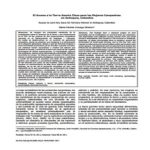Swidden, Rubber and Carbon: Can REDD+ work for people and the environment in Montane Mainland Southeast Asia?
Swidden (also called shifting cultivation) has long been the dominant farming system in Montane Mainland Southeast Asia (MMSEA). Today the ecological bounty of this region is threatened by the expansion of settled agriculture, including the proliferation of rubber plantations. In the current conception of REDD+, landscapes involving swidden qualify almost automatically for replacement by other land-use systems because swiddens are perceived to be degraded and inefficient with regard to carbon sequestration.




